#Muscicapoidea
Text
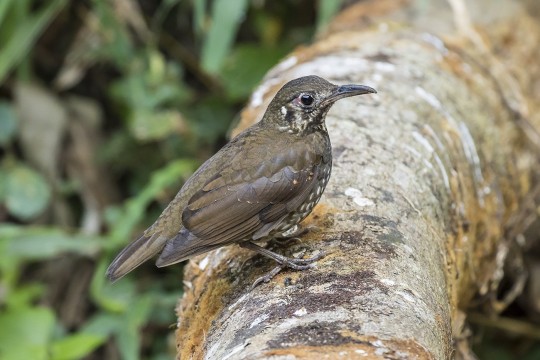
[2917/11080] Dark-sided thrush - Zoothera marginata
Order: Passeriformes
Suborder: Passeri
Superfamily: Muscicapoidea
Family: Turdidae (thrushes)
Genus: Zoothera (Asian thrushes)
Photo credit: Matthew Kwan via Macaulay Library
#birds#Dark-sided thrush#Passeriformes#Passeri#Muscicapoidea#Turdidae#Zoothera#birds a to z#undescribed#25% - 50%
47 notes
·
View notes
Text
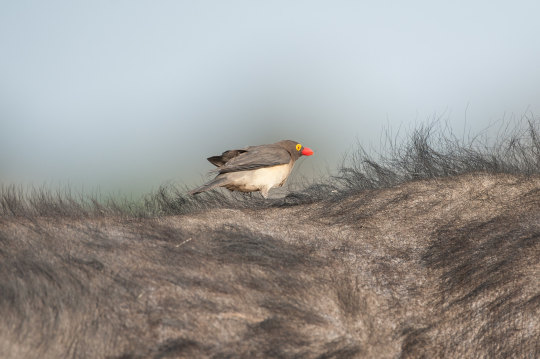
Red-billed oxpecker (Buphagus erythrorynchus)
Photo by Meg Gallucci
#red billed oxpecker#oxpecker#buphagus erythrorynchus#buphagus#buphagidae#muscicapoidea#passeri#passeriformes#eufalconimorphae#neognathae#aves#archosauria#reptilia#tetrapoda#vertebrata#chordata
26 notes
·
View notes
Photo
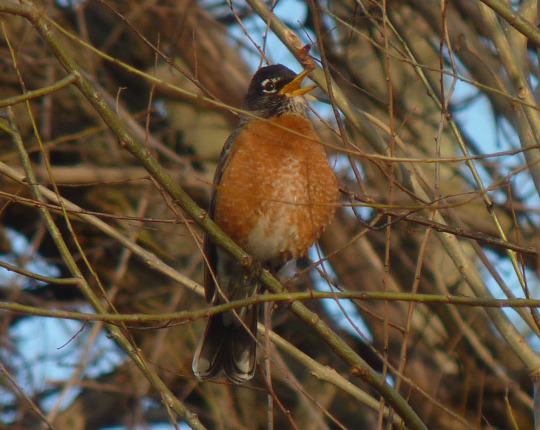
American Robin (by me)
#American Robin#Turdus migratorius#Turdus#Turdidae#Muscicapoidea#Passerida#Passeri#Passeriformes#Psittacopasserae#Eufalconimorphae#Aves#birds#robin#thrush#spring#Donaldson Park#Middlesex County#New Jersey#mine
175 notes
·
View notes
Text
Irania gutturalis
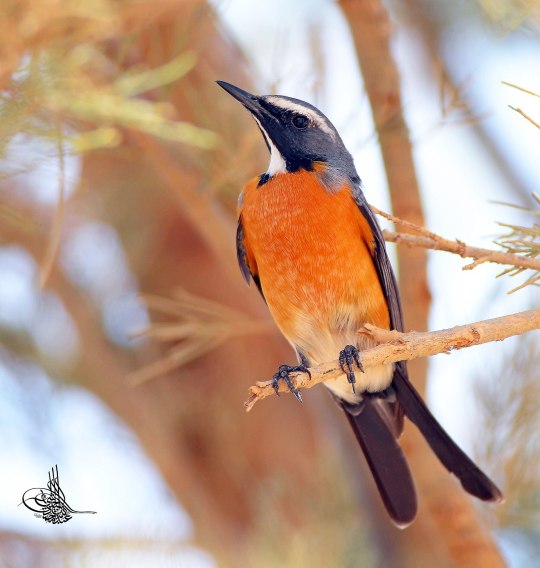
By Amrou-A, CC BY-SA 4.0
Etymology: From Iran
First Described By: de Filippi, 1863
Classification: Dinosauromorpha, Dinosauriformes, Dracohors, Dinosauria, Saurischia, Eusaurischia, Theropoda, Neotheropoda, Averostra, Tetanurae, Orionides, Avetheropoda, Coelurosauria, Tyrannoraptora, Maniraptoromorpha, Maniraptoriformes, Maniraptora, Pennaraptora, Paraves, Eumaniraptora, Averaptora, Avialae, Euavialae, Avebrevicauda, Pygostaylia, Ornithothoraces, Euornithes, Ornithuromorpha, Ornithurae, Neornithes, Neognathae, Neoaves, Inopinaves, Telluraves, Australaves, Eufalconimorphae, Psittacopasserae, Passeriformes, Eupasseres, Passeri, Euoscines, Passerides, Core Passerides, Muscicapida, Muscicapoidea, Muscicapidae, Saxicolinae
Status: Extant, Least Concern
Time and Place: Since 10,000 years ago, in the Holocene of the Quaternary


White-Throated Robins are known from the Middle East in the Summer and Eastern Africa in the Winter
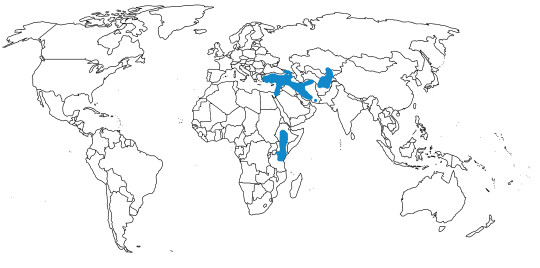
Physical Description: White-Throated Robins are beautiful passerines that actually kind of resemble American Robins in coloration, though they are not closely related at all and this is simply a case of convergent evolution. They range in size between 15 and 17 centimeters long, with grey backs and short black tails. Their wings tend to end in darker grey wingtips. They have a white stripe over their eyes, with a black side of their faces. As the name would suggest, their throats tend to be white in color. They have short, very pointy beaks and long grey legs. The reasons for their name is the coloration of their bellies - most males are a dark red-orange, and the females are as well, but with brown spotting and more white color on their belly. Some males are more of a yellow color than red-orange, which is fascinating. The juveniles tend to look like the females, but more dull in color.
Diet: White-Throated Robins primarily feed upon invertebrates and fruits, include a variety of beetles and ants, as well as berries.
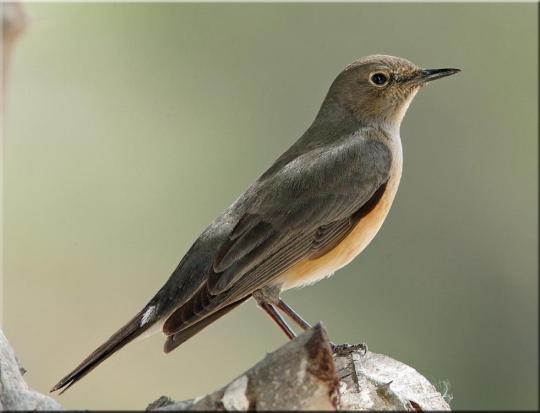
By John A. Thompson
Behavior: These robins will forage among the low twigs on the ground, as well as in bushes and trees. They usually skulk around, spending most of their time in dense undergrowth and hiding in the thicket in order to avoid danger. They are very faithful to their preferred foraging sites, and will even defend them as their territory during the winter foraging season. They are highly migratory, wintering in eastern Africa - from Eritrea to Tanzania - and then leaving their winter sites by the end of March, passing through Kenya and Ethiopia through to Western Asia & Turkey, though some get as far west as Greece and some as far south as Israel. White-Throated Robins then stay in their breeding sites until the end of August, moving back to Africa by going across the Middle East.
Given this very noticeable migration, White-Throated Robins are extremely social and coordinated, making noticeable sounds to one another based on the situation at hand. Their songs are loud, vigorous warbling for multiple seconds with a variety of pauses and phrases, including flute-like whistling and scratchy chatters. These songs are often made in flight as well. Sometimes, the males of this species will mimic other birds. They also make warbles, hard “tec-tec-tec” calls, and more trilling calls as well. They can be, and usually are, extremely loud.
White-Throated Robins tend to breed in dry, rocky slopes with some bushes provided for cover. They usually lay one brood per season, in a nest made of twigs and plant stalks and lined with feathers, usually made in the shape of a flat cup. They’re placed low to the ground in a tree, bush, or stump, and they often place their nests in the same sites from year to year. They lay between four and six pale green-blue eggs, with brown spotting. The eggs are incubated for two weeks, and the young stay for a little bit longer than a week within the next. They then can flutter around at two weeks of age, and fly fully at three weeks. They stick with the parents for another two weeks, before being fully independent.

By Westan Mese, CC BY-SA 4.0
Ecosystem: White-Throated Robins live in scrubland, steppe, stony arid hillsides, semi-desert, and mountainous regions during the breeding season, usually newer juniper and weedy terrain. They will also go to locations with birch and crab apple. In the winter they tend to live in semi-arid scrub and thickets, including acacia woodland and gardens. They don’t tend to reach higher elevations. White-Throated Robins are often preyed upon by lizards, snakes, and Common Magpies.
Other: Funnily enough, despite being called a robin and being similar in appearance to the American Robin - which is actually a thrush - White-Throated Robins are actually chats. Because passerine phylogenetics is a mess. They are not threatened with extinction, and there are probably millions of White-Throated Robins alive today.
~ By Meig Dickson
Sources Under the Cut
Collar, N. (2019). White-throated Robin (Irania gutturalis). In: del Hoyo, J., Elliott, A., Sargatal, J., Christie, D.A. & de Juana, E. (eds.). Handbook of the Birds of the World Alive. Lynx Edicions, Barcelona.
Jobling, J. A. 2010. The Helm Dictionary of Scientific Bird Names. Christopher Helm Publishing, A&C Black Publishers Ltd, London.
#Irania gutturalis#Irania#White-Throated Robin#Bird#Dinosaur#Factfile#Birds#Dinosaurs#Birblr#Passeriform#Songbird#Perching Bird#Thrush#Omnivore#Africa#Eurasia#Quaternary#Songbird Saturday & Sunday#biology#a dinosaur a day#a-dinosaur-a-day#dinosaur of the day#dinosaur-of-the-day#science#nature
217 notes
·
View notes
Text
Chim Sáo – Thông tin Cách nuôi và Giá #Meohaitac #Mèo Hải Tặc
Vốn là một loại chim đẹp, thông minh và có khả năng nói được, chim Sáo là một trong các loài chim cảnh nhỏ rất được ưa chuộng. Tuy nhiên, để chăm sóc được một chú chim Sáo không phải là điều đơn giản.
Họ Sáo thuộc về liên họ Muscicapoidea, cùng các loài chim như họ họa mi và chim nhại(Mimidae), Buphagidae, Hoét(Turdidae), Đớp ruồi( Muscicapidae).
Sáo có tên khoa học là Sturnidae, là một loài chim được tìm thấy vào năm 1815, đến thời điểm hiện tại có khoảng 30 loài Sáo trên thế giới. Tại Việt Nam ngoài tên gọi là chim Sáo, chúng còn có những tên khác là chim Yểng, Nhồng hoặc chim Cà Cưỡng.
Sáo có khoảng 30 loài trên thế giới.
Có bao giờ bạn thắc mắc nên cho những chú chim Sáo ăn gì, nuôi trong môi trường như thế nào, chim Sáo có giá bao nhiêu tiền,.. chưa?? Nếu bạn đang thắc mắc thì bài viết này là dành cho bạn.
Hãy dành vài phút để theo dõi bài viết này nhé.
1. Cách nuôi chim sáo như thế nào?
a. Chim Sáo ăn gì?
Vì là loài động vật ăn tạp, nên chúng sẽ có thể ăn được cả thực vật lẫn động vật. Thức ăn yêu thích của chúng chính là những loại sâu bọ, trái cây và hạt kê.
Đây là loài chim có ngoại hình nhỏ nhắn, chỉ dài khoảng 15 – 30cm khi trưởng thành, cân nặng cũng chỉ khoảng 35 – 220 gram. Tuy nhiên chúng lại có cơ thể khá săn chắc và cực kỳ nhanh nhẹn.
Đặc điểm dễ nhận biết của loài chim này là chúng có cổ khá dài, đầu nhỏ, hơi dẹp, phần mỏ sẽ tương đối dài, nhọn và cứng. Đôi mắt của chúng có hình tròn, màu tùy thuộc vào màu lông, thường sẽ có màu đen hoặc nâu.
Thức ăn yêu thích của chúng là sâu bọ, hạt kê.
b. Kỹ thuật nuôi chim Sáo như thế nào?
– Lựa chọn lồng nuôi như thế nào?
Là loài chim yêu thích nhảy nhót, do đó bạn nên nuôi chúng trong những lồng kích thước lớn, đảm bảo không gian rộng rãi để chúng có thể dễ dàng hoạt động.
Bạn có thể sử dụng những loại lồng bằng tre, mây hoặc bằng lưỡi kẽm. Tuy nhiên nên lắp thêm then cài chắc chắn để chúng không thể dùng mỏ mở cửa chuồng, bởi chúng là loài chim rất nghịch ngợm.
Lồng nuôi Sáo cần rộng rãi và thoáng mát
Bố trí thêm các cành cây tiểu cảnh, bát uống nước, bát ăn hạt và bát ăn côn trùng cũng cần tách biệt, không nên dùng chung 1 bát.
Nên đặt chuồng chim theo hướng đông – nam, đây là hướng mang lại sự mát mẻ vào mùa hè, ấm vào mùa đông. Không nên cho chúng ở ngoài nắng quá nhiều, chỉ nên cho chúng hứng nắng vào buổi sáng sớm.
Chim Sáo thường dễ bị mắc những bệnh như tiêu chảy, viêm phổi, béo, lông dễ bị xơ,… Bởi vậy, bạn nên thường xuyên theo dõi vấn đề sức khỏe, cũng như nên chú ý về chế độ ăn, vệ sinh lồng chim hợp lý để Sáo có thể phát triển khỏe mạnh hơn.
– Cách huấn luyện chim Sáo tập nói
Đầu tiên, bạn không nên chọn nuôi những chú Sáo đã quá trưởng thành, bởi Sáo được xem là loài chim tương đối hung dữ với người lạ. Nên nuôi những con còn nhỏ để có thời gian làm quen với chúng.
Trong thời gian đầu khi nuôi, không nên thả rông chúng quá nhiều, đặt lồng ở nơi yên tĩnh tránh người lạ. Khi chúng đã quen với môi trường mới, bạn có thể để chúng ở những nơi thoáng mát hơn, gần cửa ra vào để chúng có thể bắt chước được những câu nói của người khác.
CLICK!! Bạn cũng có thể sở hữu một chú Vẹt nếu muốn chúng bắt chước nói tiếng người.
Sáo có thể nói chuyện và hót bắt chước theo âm giọng của bạn.
Để huấn luyện được chim Sáo nói hiệu quả, bạn có thể tiến hành các cách lột lưỡi sáo để chúng dễ phát âm hơn. Nên dạy vào lúc chiều tối hoặc lúc chúng đang ngủ sau đó đưa mồi nhử để huấn luyện chúng. Bạn sẽ mất khoảng 5 – 6 tháng để dạy thành công Sáo nói.
Tuy nhiên, có một điều thú vị là Sáo sẽ bắt chước giống như người dạy hoặc bạn cũng có thể nghe tiếng chim sáo hót theo âm giọng của người qua đường, thú vị đúng không nào?
2. Chim Sáo giá bao nhiêu tiền?
Hiện tại có rất nhiều loại chim Sáo trên thị trường như chim Sáo đen mỏ vàng, chim Sáo nâu, chim Sáo đen (chim sáo trâu). Tùy các loại chim sáo khác nhau cũng như các yếu tố về màu lông, sức khỏe, kích thước sẽ có những mức giá khác nhau, tuy nhiên chúng sẽ có mức giá từ 200.000 đ đến 4.000.000 đồng/ con.
Tùy vào các loại Sao mà chúng được bán với giá khác nhau.
Để chọn được một chú Sáo đẹp và khỏe mạnh, bạn nên chú ý một số điểm sau đây:
– Có thân hình chắc khỏe, mắt sáng đầu to và thế đứng cao, thẳng.
– Chọn những chú Sáo con có tiếng hót thanh cao.
– Không nên lựa mua những chú Sáo có tính cách quá trầm sẽ khiến cho bạn khó huấn luyện hơn.
Để huấn luyện được chim Sáo có thể nói được quả không phải điều dễ dàng đúng không nào, tuy nhiên với những thông tin hữu ích ở trên, hy vọng bạn sẽ huấn luyện được chú chim Sáo của mình thành công.
CLICK ME!!
Nhím kiểng – Nghe tên thôi đã thấy đau!
Sóc bay có thực sự biết bay??
Rồng Nam Mỹ – có phải là “Rồng” như tên gọi?
The post Chim Sáo – Thông tin Cách nuôi và Giá appeared first on Shop MÈO Uy Tín nhất TP.HCM.
0 notes
Video
. . اكتب شي تؤجر عليه . . . 🍁🌺 قال رسول الله ﷺ : يكون في آخر الزمان خليفة يقسم المال ولا يعده 🍁🌺 . ✔⚪⚫صحيح مسلم⚫⚪✔ . . . . 🔴💥طائر المينا السومطريه - Common Hill Myna🔴💥 . . . . . التصنيف العلمي المملكة : الحيوانية الأسرة في اللغات : الفقاريات الدرجة : إيفس الفئة الفرعية : Neornithes صنيف فرعي : حديثات الفك فوق رتبة : Neoaves الترتيب : Passeriformes رتيبة : Passeri الدون : Passerida الفصيلة : Muscicapoidea الأسرة : Sturnidae جنس : Gracula الأنواع : G. religiosa الاسم العلمي : Gracula religiosa . . توجدها في الهند وسيلانكا وبورما وتايلاند ولاوس وكمبوديا وفيتنام وسومطرة واندونسيا وبورنيو و تايلاند وتتغذى على النباتات والزواحف الصغيرة و الفواكه و الحشرات وبيض النملة والبذور والبيضة المسلوقة و يفضل الناس بتربيته لأنه يستطيع تقليد الاصوات وتضع الانثى من 2 الى 3 بيضات وتستمر الحضانة من 16 الى 17 يوم وتغادر الصغار العش بعد 20 يوم من الفقس . . Its presence in India and Sri Lanka, Burma, Thailand, Laos, Cambodia, Vietnam and Sumatra, Indonesia, Borneo and Thailand and feed on plants and small reptiles, fruits, insects and eggs Ant, seeds and egg boiled and people upbringing is preferred because it can mimic sounds and female lays 2 to 3 eggs and continue incubation of 16 to 17 days The young leave the nest after 20 days of hatching . . . . . . . 🍂لا اله الا الله محمد رسول الله صلى الله عليه وسلم There is no god but Allah and Muhammad is the messenger of God🍂 . . . . . 🍁🌺 قال رسول الله ﷺ : لتقاتلن اليهود فلتقتلنهم حتى يقول الحجر يا مسلم هذا يهودي فتعال فاقتله 🍁🌺 . ✔⚪⚫صحيح مسلم⚫⚪✔ . . . . 🍁🌺 قال رسول الله ﷺ : عن تربة الجنة، فقال درمكة بيضاء مسك خالص 🍁🌺 . ✔⚪⚫صحيح مسلم⚫⚪✔ . . . . 🍀قران - Quran🍀 . . . @bosaif_aldhaheri @bosaif_aldhaheri @bosaif_aldhaheri . . https://www.instagram.com/p/B-5BbqlAWo6/?igshid=8gniv65c6fjx
0 notes
Text
Long Tailed Tit, Magpie, Red Winged Blackbird, Dipper, Titmouse, and Robin Bird Animal
Long Tailed Tit Scientific Name: Aegithalos caudatus Long Tailed Tit Kingdom: Animalia Long Tailed Tit Phylum: Chordata Long Tailed Tit Class: Aves Long Tailed Tit Order: Passeriformes Long Tailed Tit Family: Aegithalidae Long Tailed Tit Genus: Aegithalos Long Tailed Tit Species: A. caudatus Long Tailed Tit Binomial name: Aegithalos caudatus Magpie Scientific Name: Pica pica Magpie Kingdom: Animalia Magpie Phylum: Chordata Magpie Class: Aves Magpie Order: Passeriformes Magpie Family: Corvidae Red Winged Blackbird Scientific Name: Agelaius phoeniceus Red Winged Blackbird Kingdom: Animalia Red Winged Blackbird Phylum: Chordata Red Winged Blackbird Class: Aves Red Winged Blackbird Order: Passeriformes Red Winged Blackbird Family: Icteridae Red Winged Blackbird Genus: Agelaius Red Winged Blackbird Species: A. phoeniceus Red Winged Blackbird Binomial name: Agelaius phoeniceus Dipper Scientific Name: Cinclus Dipper Kingdom: Animalia Dipper Phylum: Chordata Dipper Class: Aves Dipper Order: Passeriformes Dipper Superfamily: Muscicapoidea Dipper Family: Cinclidae Dipper Genus: Cinclus Titmouse Scientific Name: Baeolophus bicolor Titmouse Kingdom: Animalia Titmouse Phylum: Chordata Titmouse Class: Aves Titmouse Order: Passeriformes Titmouse Family: Paridae Titmouse Genus: Baeolophus Titmouse Species: B. bicolor Binomial name: Baeolophus bicolor Robin Scientific Name: Turdus migratorius Robin Kingdom: Animalia Robin Phylum: Chordata Robin Class: Aves Robin Order: Passeriformes Robin Family: Turdidae Robin Genus: Turdus Robin Species: T. migratorius Robin Binomial name: Turdus migratorius #longtailedtit #magpie #robinbird
Watch video on YouTube: https://youtu.be/-aZbc0g70kU
0 notes
Photo

European Starlings by Dendroica cerulea on Flickr.
Some people in the USA hate starlings for using bluebird nest sites. They didn’t ask to be brought to the USA. They are simply living their starling lives and they are inquisitive, beautiful and gregarious creatures. Except when they poop their nasty poop on my car. Then I hate them too.
#European Starling#Sturnus vulgaris#Sturnus#Sturnidae#Muscicapoidea#Passerida#Passeri#Passeriformes#Psittacopasserae#Eufalconimorphae#Aves#birds#songbird#Common Starling#Starling#snow#winter#garden#Highland Park#Middlesex County#NJ#New Jersey
6 notes
·
View notes
Text
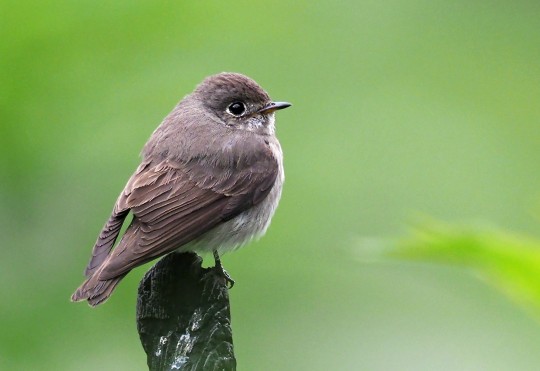
[2916/11080] Dark-sided flycatcher - Muscicapa sibirica
Order: Passeriformes
Suborder: Passeri
Superfamily: Muscicapoidea
Family: Muscicapidae (old world flycatchers)
Photo credit: Andrew Spencer via Macaulay Library
#birds#Dark-sided flycatcher#Passeriformes#Passeri#Muscicapoidea#Muscicapidae#Muscicapa#birds a to z#undescribed#25% - 50%
50 notes
·
View notes
Text
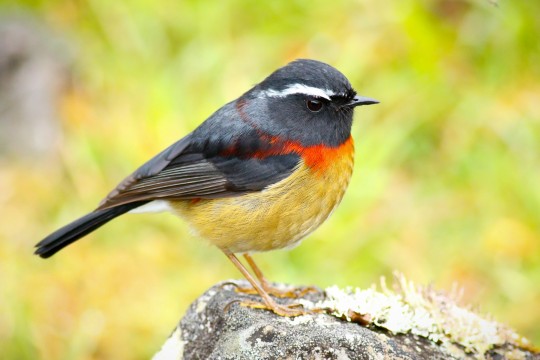
[2540/11080] Collared bush robin - Tarsiger johnstoniae
Order: Passeriformes
Suborder: Passeri
Superfamily: Muscicapoidea
Family: Muscicapidae (old world flycatchers)
Subfamily: Saxicolinae (chats)
Photo credit: u7 Liao via Macaulay Library
#birds#Collared bush robin#Passeriformes#Passeri#Muscicapoidea#Muscicapidae#Saxicolinae#Tarsiger#birds a to z#undescribed
250 notes
·
View notes
Text

[2299/11080] Chestnut-naped forktail - Enicurus ruficapillus
Order: Passeriformes
Suborder: Passeri
Superfamily: Muscicapoidea
Family: Muscicapidae (old world flycatchers)
Subfamily: Saxicolinae (chats)
Photo credit: Wai Loon Wong via Macaulay Library
#birds#Chestnut-naped forktail#Passeriformes#Passeri#Muscicapoidea#Muscicapidae#Saxicolinae#Enicurus#birds a to z#undescribed
246 notes
·
View notes
Text
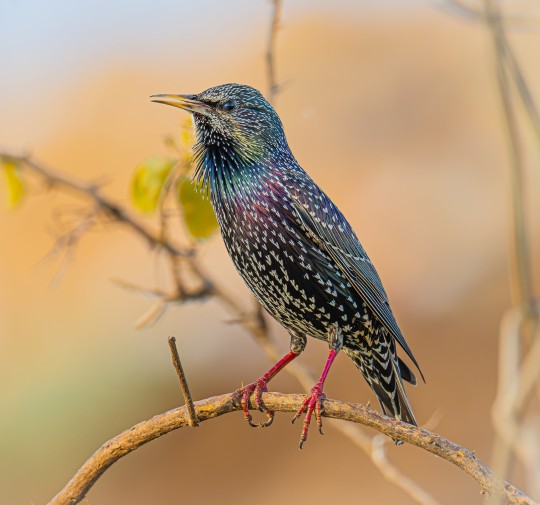
[2643/11080] Common starling - Sturnus vulgaris
Also known as: European starling
Order: Passeriformes
Suborder: Passeri
Superfamily: Muscicapoidea
Family: Sturnidae (starlings)
Photo credit: Uriel Levy via Macaulay Library
#birds#Common starling#Passeriformes#Passeri#Muscicapoidea#Sturnidae#Sturnus#birds a to z#European starling#undescribed
165 notes
·
View notes
Text

[2239/11080] Chestnut-bellied thrush - Turdus fulviventris
Order: Passeriformes
Suborder: Passeri
Superfamily: Muscicapoidea
Family: Turdidae (thrushes)
Genus: Turdus (true thrushes)
Photo credit: Mark Scheuerman via Macaulay Library
#birds#Chestnut-bellied thrush#Passeriformes#Passeri#Muscicapoidea#Turdidae#Turdus#birds a to z#undescribed
186 notes
·
View notes
Text

[2580/11080] Common blackbird - Turdus merula
Also known as: Eurasian blackbird
Order: Passeriformes
Suborder: Passeri
Superfamily: Muscicapoidea
Family: Turdidae (thrushes)
Genus: Turdus (true thrushes)
Photo credit: Antonio M Abella via Macaulay Library
#birds#Common blackbird#Passeriformes#Passeri#Muscicapoidea#Turdidae#Turdus#birds a to z#Eurasian blackbird#undescribed
122 notes
·
View notes
Text
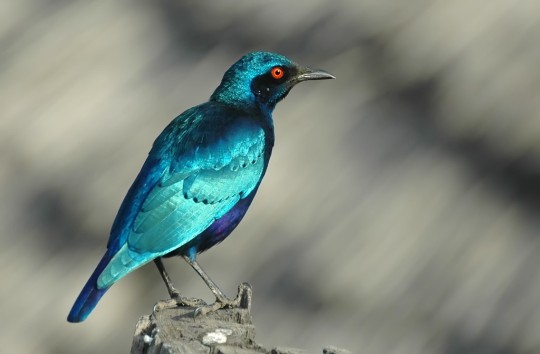
[1695/10977] Bronze-tailed starling - Lamprotornis chalcurus
Order: Passeriformes
Suborder: Passeri
Superfamily: Muscicapoidea
Family: Sturnidae (starlings)
Photo credit: Augusto Faustino via Macaulay Library
#birds#Bronze-tailed starling#Passeriformes#Passeri#Muscicapoidea#Sturnidae#Lamprotornis#birds a to z#undescribed
276 notes
·
View notes
Text
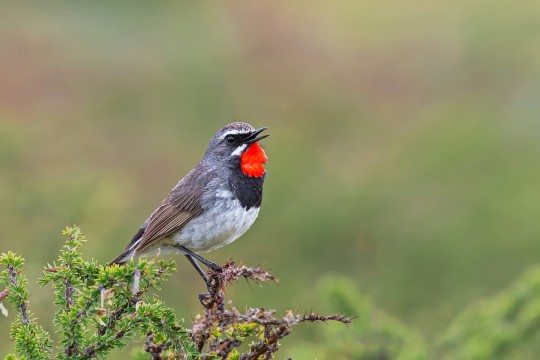
[2370/11080] Chinese rubythroat - Calliope tschebaiewi
Order: Passeriformes
Suborder: Passeri
Superfamily: Muscicapoidea
Family: Muscicapidae (old world flycatchers)
Subfamily: Saxicolinae (chats)
Photo credit: Rajkumar Das via Macaulay Library
#birds#Chinese rubythroat#Passeriformes#Passeri#Muscicapoidea#Muscicapidae#Saxicolinae#Calliope#birds a to z#undescribed
122 notes
·
View notes